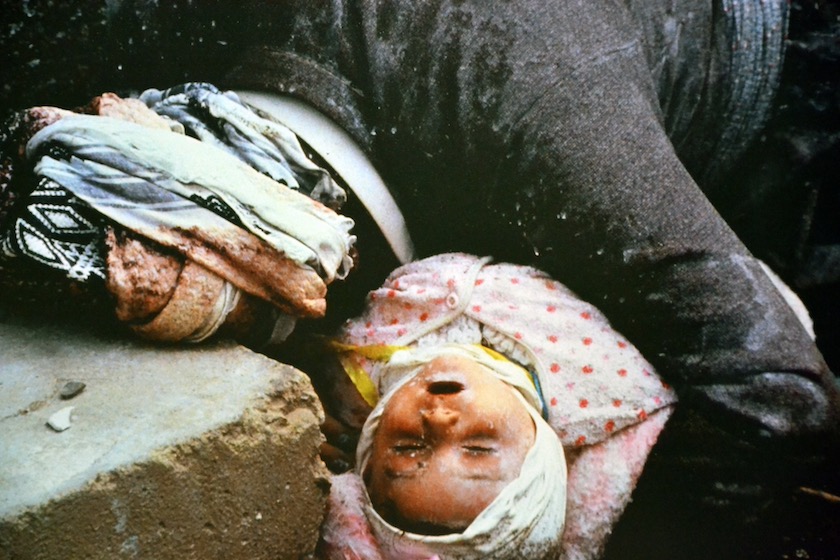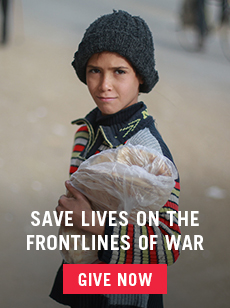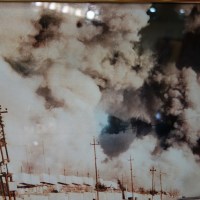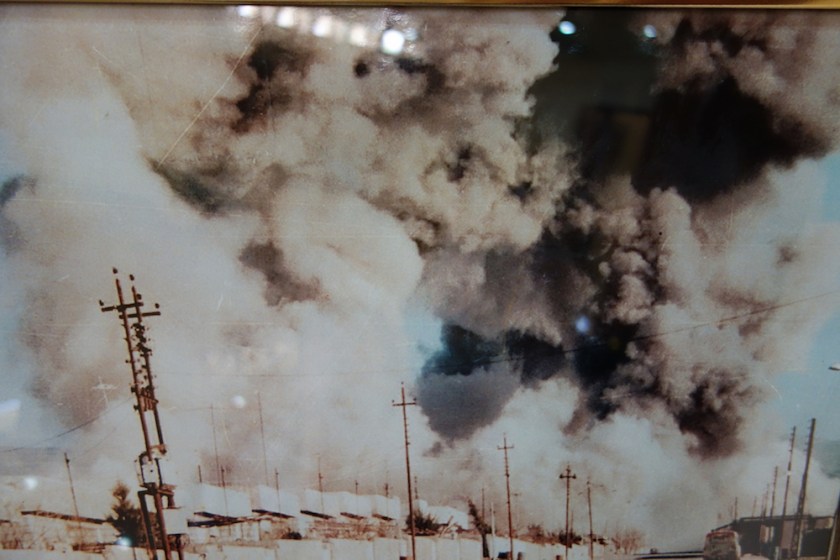Note: The post below contains an image of the devastation in Halabja that some readers might find disturbing. The photo was taken by a team of journalists who went to Halabja the day after the chemical attack in 1988 to document the tragic aftermath, so the world would know what happened here.
Today marks 28 years since Saddam Hussein’s military machine massacred thousands of Kurds in Halabja with chemical bombs.
The attack was highly strategic, calculated. A first barrage shattered protective glass in windows across Halabja, making sure the gas reached its targets.
A cocktail of toxic chemicals was chosen for maximum impact. One gas had a strong, sweet aroma—not unlike apple blossoms, intended to make people inhale deeply to find out what was causing the smell. Another chemical was used as a paralyzing agent, causing people to collapse to the ground.
A third and lethal gas was used because it is heavier than air. Anyone who fell, or crouched low for safety, or took shelter in a basement—they were dead within minutes.
Men, women, and children died indiscriminately as toxic gas seeped into their homes, through broken windows, filling the spaces where they’d taken shelter.
Up to 5,000 people died that day. Thousands more were injured—most of them civilians—their bodies, soil, and psyches permanently marred by the event.

The effects were not isolated to one horrible day in March 1988. A team of researchers linked chemical weapons to a 400% increase in birth defects among children of survivors, concluding “the effects may last generations.” The staggering rise in birth defects is one of the reasons we began working in medical care in the first place, and it’s no coincidence that first child whose life you saved was from Halabja.
But today, on what should be an anniversary marking a problem now almost 30 years old, Kurdish forces and civilians are enduring chemical attacks again at the hands of ISIS.

Just a few days ago, reports of a large scale chemical attack in a Shia Turkmen city near Kirkuk indicate that 600 people were injured and a 3-year-old girl was killed. This is just the most recent of many reports claiming that ISIS is using chemical weapons in Iraq and Syria. The Iraqi army and Shia militias fighting ISIS in places like Ramadi and Fallujah have also reported chemical attacks against their fighters and civilians.
On our recent trip to Sinjar mountain in northern Iraq, ISIS launched chemically-laden rockets on nearby Yazidi and Kurdish fighters, as well as on civilians you’re working to support.
According to the US-led coalition, the chemicals ISIS has used so far include chlorine and a low-grade sulphur mustard—less potent than the gas used in Halabja all those years ago, but still deadly and still a nightmare that should have never been visited on the people of Iraq, be it 28 years ago or today.
Today, as you remake the world around you and unmake violence here in Iraq, remember Halabja. Remember what people are capable of doing to one another, and what we are capable of doing to make it right.
Images: Bombing of Halabja in 1988 (credit: Béatrice Dillies au Kurdistan on Flickr), victims of the Halabja attack (credit: Sammy Six on Flickr), ISIS rocket fired toward Sinjar in 2016 (credit: Matt Willingham)


